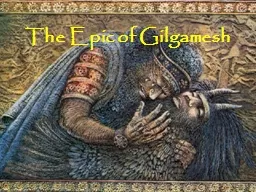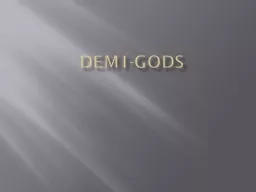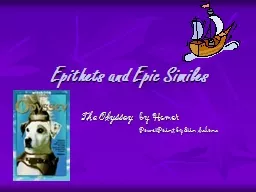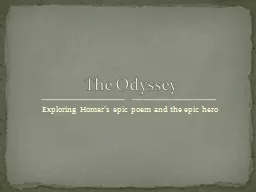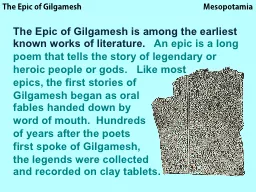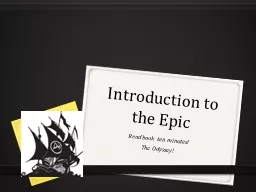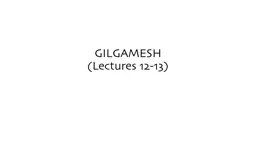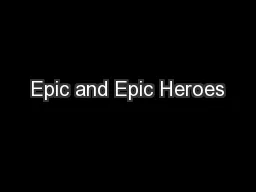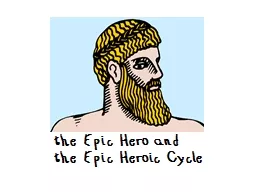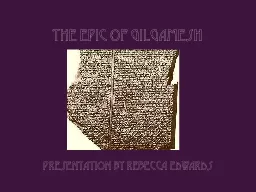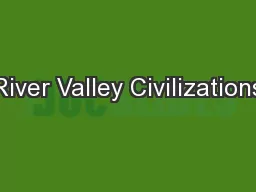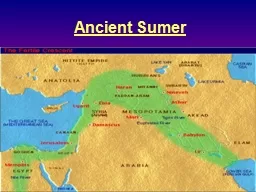PPT-The Epic of Gilgamesh
Author : alexa-scheidler | Published Date : 2019-12-05
The Epic of Gilgamesh What is Myth Symbolize and embody the spiritual values of a culture Society preserves myths because it believes world views found in them are
Presentation Embed Code
Download Presentation
Download Presentation The PPT/PDF document "The Epic of Gilgamesh" is the property of its rightful owner. Permission is granted to download and print the materials on this website for personal, non-commercial use only, and to display it on your personal computer provided you do not modify the materials and that you retain all copyright notices contained in the materials. By downloading content from our website, you accept the terms of this agreement.
The Epic of Gilgamesh: Transcript
Download Rules Of Document
"The Epic of Gilgamesh"The content belongs to its owner. You may download and print it for personal use, without modification, and keep all copyright notices. By downloading, you agree to these terms.
Related Documents

